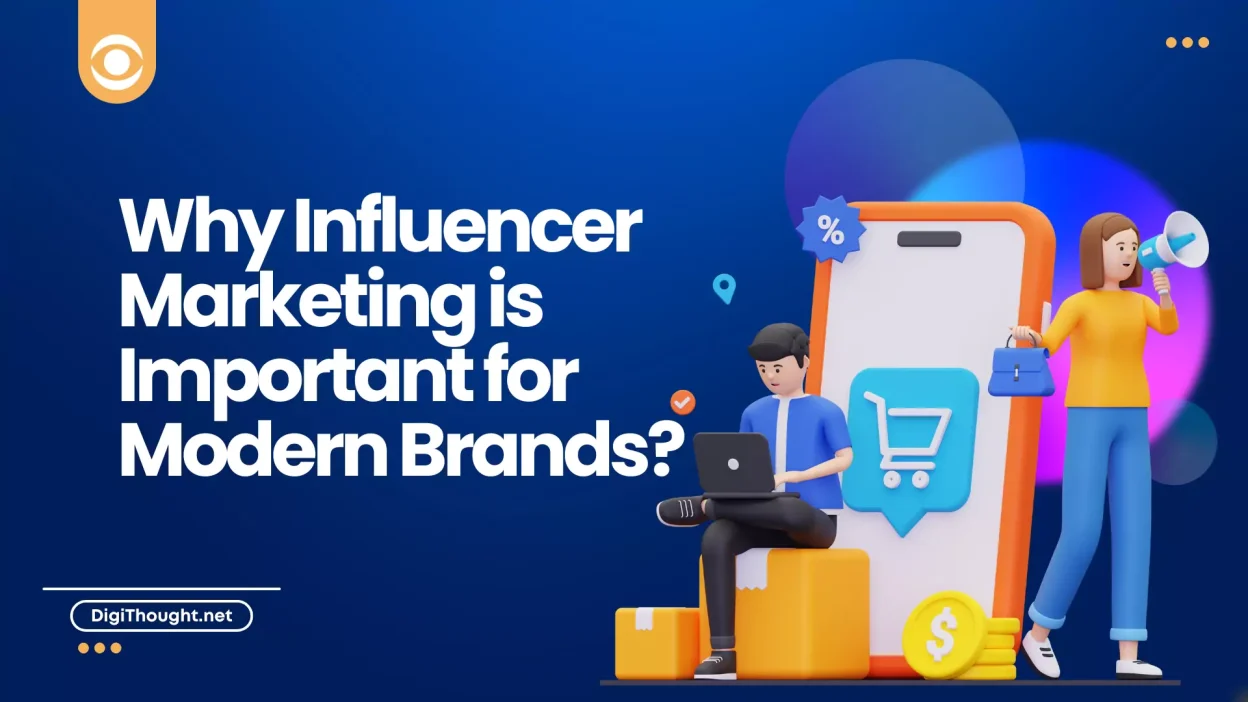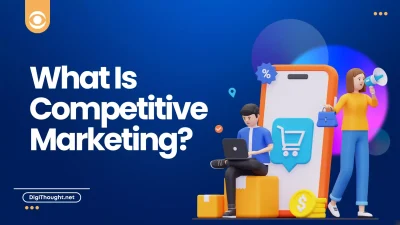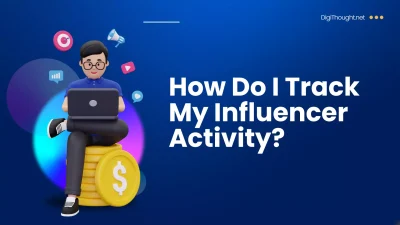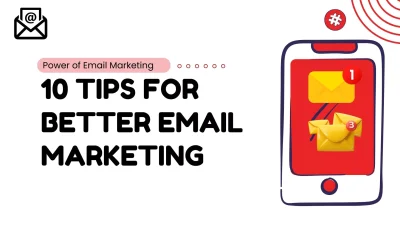Marketing is too important to leave to the marketing department.
At its heart, marketing is not just about selling products and services, it is about value creation, brand recognition, and establishing long-term relationships with customers. For any business that’s trying to get a competitive edge, effective marketing tactics are the weapon of choice.
This post is about how marketing directly influences a company’s competitiveness. Find out how it enables companies to differentiate themselves, adapt to changes in the marketplace, and ultimately grow on a sustainable basis.
The Place of Marketing in Organizational Competitiveness
Every company plays in a noisy and traditional market. Whether a small local bakery is fighting with chain stores or a global tech giant battling for market share, businesses have to figure out how to stake their ground accordingly. It is marketing that is the platform through which they can stand out against the competition.
Just take a look at marketing’s role in determining the competitive posture of an organization:
Diversity in Crowded Markets
Think about Apple. Why are millions of customers paying extra for what they’re selling? One word: differentiation.
Here are some reasons why Apple marketing is so successful:
Apple’s marketing features innovation, nowhere else found elegant design, and value for money. Apple distinguishes itself from its competitors by cutting a distinct brand identity that appeals to its audience.
With marketing, your company can:
- Create compelling brand narratives
- Focus on unique selling propositions (USPs)
- Position itself as “most preferred” among users
Building Brand Awareness
Brand visibility
The most prominent influence of marketing on competitiveness is in boosting visibility of a brand. Trust, credibility and visibility is what a strong brand presence develops.
For example, Coca-Cola’s international advertising efforts have made sure that the soft drink is familiar to millions of people around the world. Marketing keeps company perception in customer warp.106 A marketing campaign reinforces the customer’s image of the company, and thereby ensures that the company is always first to come to mind when customers consider making a purchase.
Improved Customer Relations
Marketing is also about building relationships with the people who buy what we make.
Businesses can now engage with consumers on a personal level, through methods including:
- Email newsletters
- Interaction via social media
Such engagement creates loyalty, and loyalty is an ugly, powerful weapon in competitive markets.
Loyal customers 13(lock-ins) 13 who are ambience valued with connected near the brand are less likely in the direction of move insofar as competitors even-behaved even when alternatives remain available.
Market Insight and Flexibility
Marketing is also a lens into customer behavior and market patterns. Through understanding:
- Customer preferences
- Pain points
- Shifting needs
Companies can react quickly to external changes.
Example:
Fast food chains such as McDonald’s changed the message in their marketing during the COVID-19 pandemic to stress contactless delivery and digital ordering. This enables them to stay relevant and keep customers in their networks in ways that are new and unique.
Key takeaway:
Marketing is a power house that creates a point of difference, loyalty, and a buffer to competition that helps ensure you’re ahead of the curve.
Marketing Tactics to Generate Competition
“Generic market tactics will never set an organization apart from its competition.”
Instead, businesses should execute targeted campaigns that are workable.
Content Marketing
Content is king — and for good reason.
Great content that educates and entertains your readers is the best way to get prospective readers to your site naturally.
Example:
HubSpot, a top inbound marketing platform, has free guides, blogs and tools for business people to grow their business.
It is through this audience seeding strategy that HubSpot becomes an authoritative expert and converts people into software customers as well.
Personalized Marketing
Personalization is what customers desire.
A study showed that 80% of consumers are more likely to buy from brands that provide a personalized experience.
Use data like marketing would to:
- Deliver personalised messages to their inboxes through dynamic email campaigns
- Personalised web and product recommendations
Example:
Amazon strategically offers products to the user by an algorithm that depends on the browsing path of the user.
Social Media Marketing
Social is where the fans are most active.
The advantage is usually with brands that flesh out their social strategies by:
- Engaging their fans and followers
- Communicating genuine messages
- Promoting user-generated content
Example:
A brand like Gymshark does great at inspiring its fitness-oriented base with relatable content and influencer partnerships.
Performance Marketing
Using performance-driven campaigns (like pay-per-click ads) that can:
- Impact performance
- Be measured by ROI
Helps with tight budgets. This means every dollar spent on marketing is going towards actionable results.
Actionable insight:
You need to combine tactics such as these to purposefully target multiple dimensions of the customer experience and develop a holistic competitive advantage.
Marketing’s Impact on the Bottom Line
Marketing isn’t just an indulgent extra; it’s a necessity, because over and above being a “feel good” activity that you have to do when trying to make maximum impact and income, marketing is key to your financial success.
Driving Revenue Growth
A strong marketing plan:
- Broadens an organization’s base
- Brings in new customers
- Maintains the loyalty of current ones
Example:
Strong performance campaigns during high-demand seasons, such as Black Friday, have turned around record profits for retailers.
_ Savings That Add Up with Retention
Marketing is not just about acquisition, it is about retention.
“It Is 5x More Expensive to Acquire a Customer Than to Retain One”
and
“The Probability of Selling to an Existing Customer is 60–70%, Compared to 5–20% for a New One.”
RETAINING-CURRENT-CUSTOMER
The cost of retaining a customer is 5 times less than acquiring a new one and loyal customers spend 67% more than a new one.
Organisations that utilize:
- Focused loyalty programs
- Personalised communication
To drive customer loyalty, find that they are able to keep churn rates low and maximise lifetime customer value.
Long-Term Brand Equity
Marketing is not only about short-term profits, but also about building assets over time.
Legendary companies such as Nike have spent generations on ad campaigns that create emotions in consumers.
That legacy of “Just Do It” continues to:
- Drive sales
- Drive loyalty
- Decade after decade
Proof point:
Companies that spend approximately 5-10% of their annual revenues on marketing have seen improvement in profitability, Deloitte studies found.
How Businesses Can Ramp Up Marketing Effectively (With Actionable Tips)
Understand Your Audience
The more information you have on your customers, the more robust your strategy is.
Leverage:
- Analytics
- Consumer insights platforms
To monitor preferences, actions, and trends to optimize for your next uber-convenient experience.
Stay Data-Driven
A marketer’s best friend?
Whether it’s:
- Social media analytics
- CRM platforms
Capturing the right data allows you to make informed decisions.
Emphasize Sustainability and Social Impact
Today’s clientele tends to shop brands that keep strong morals.
Create organic channels to:
- Communicate about your sustainability
- Social endeavors
Develop Talent and Technology
Arm your team with:
- The right tools (e.g., marketing automation software)
- Skills in areas like SEO, content writing, and digital advertising
Measure and Optimize
There’s no guarantee of marketing success.
- Run experiments
- Monitor performance with metrics
- Adjust your campaigns to keep up with moving targets
Competing with Marketing
Trailer dealers compete with marketing
Marketing is no longer a discretionary business activity, it’s mandatory.
It:
- Guides the growth of an organization
- Enhances visibility
- Creates lasting impressions with customers
Those who have the know-how when it comes to powerful marketing are the ones who are going to:
- Stand out amongst their competition
- Leave a legacy
Don’t know where to start?
Focus more on:
- Establishing your USP
- Analysis
- Always providing value
Keep an eye on our blog for more tips on strengthening your marketing plan and take the first step toward developing your competitive edge.



